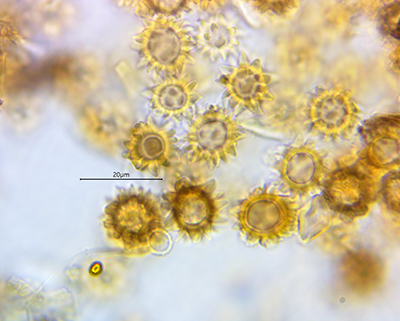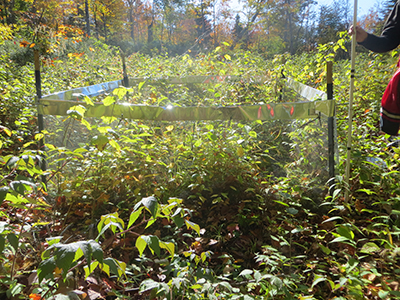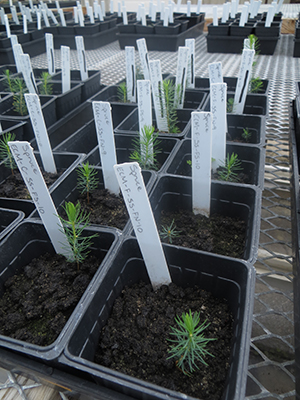Small mammals and mycorrhizal fungi are integral component to forests, yet much remains unknown about how their interactions contribute to the health and resiliency of forests. At the Second College Grant ASCC installation in northern New Hampshire, University of New Hampshire researchers are studying the role of small mammals (mice, voles, chipmunks) in dispersing mycorrhizal fungi and subsequent effects on forest regeneration.
Mycorrhizal fungi are important symbionts that colonize roots and assist trees with nutrient and water uptake. Timber harvests can significantly reduce mycorrhizal fungal diversity. However, small mammals that consume fungal fruiting bodies, like mushrooms and truffles, may be important for dispersing fungal spores in their scat, thereby repopulating regenerating forests with local fungi.


To assess linkages among small mammals, mycorrhizal fungi, and trees, postdoctoral fellow, Ryan Stephens, and advisors Dr. Rebecca Rowe and Dr. Serita Frey are conducting field surveys of small mammals in one-acre gap cuts at the Second College Grant ASCC site. They are using these surveys along with microscopy and genetic analysis of small mammal scat to determine the type, distance, and abundance of mycorrhizal spores that small mammals are dispersing into cleared forest gaps. The research team also has initiated a greenhouse experiment to determine the role of small mammal-dispersed spores on mycorrhizal colonization and growth of tree seedlings. They have also established fenced exclosures in the field, which prevent access by small mammals, to assess their influence on plant regeneration and soil fungal communities over time. Results of this research will shed light on how animals contribute to the response of forests to disturbance, including regeneration following timber harvest.
Author: Ryan Stephens, Postdoctoral Fellow, University of New Hampshire



